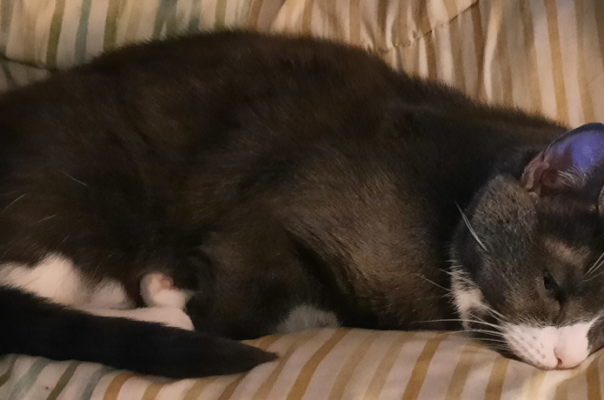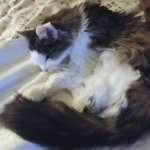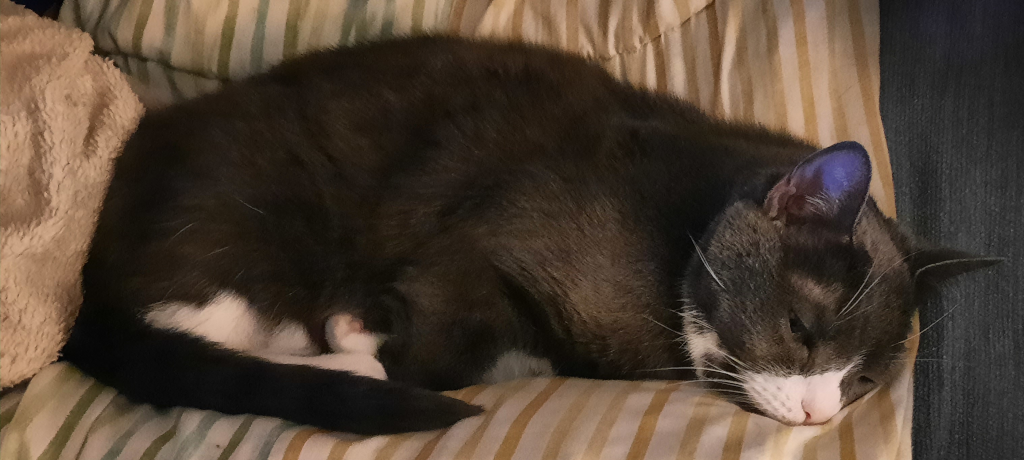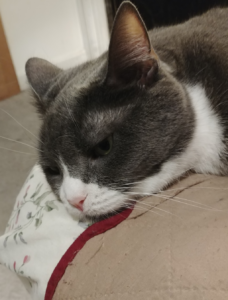 Senior cats, like most cats are masters of disguise when it comes to illness. Unlike their canine counterparts who often make their discomfort obvious, our feline friends have evolved to hide signs of weakness—a survival mechanism from their wild ancestors and Belle ‘n’ Paws were no different. This instinctive behavior makes it challenging for even the most attentive cat owners to recognize when their pet is unwell.
Senior cats, like most cats are masters of disguise when it comes to illness. Unlike their canine counterparts who often make their discomfort obvious, our feline friends have evolved to hide signs of weakness—a survival mechanism from their wild ancestors and Belle ‘n’ Paws were no different. This instinctive behavior makes it challenging for even the most attentive cat owners to recognize when their pet is unwell.
By understanding subtle behavioral changes and knowing which symptoms warrant immediate attention, you can become more effective at safeguarding your cat’s health.
Behavioral Changes That May Signal Illness
Changes in Social Interaction
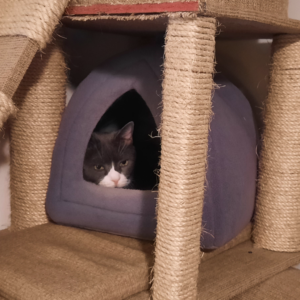 One of the earliest signs that your senior cat might be feeling unwell is a shift in their social behavior. A normally affectionate cat who suddenly becomes withdrawn or hides deserves close monitoring. Conversely, a typically independent cat who suddenly demands excessive attention might also be signaling distress. These behavioral changes often occur before physical symptoms become apparent.
One of the earliest signs that your senior cat might be feeling unwell is a shift in their social behavior. A normally affectionate cat who suddenly becomes withdrawn or hides deserves close monitoring. Conversely, a typically independent cat who suddenly demands excessive attention might also be signaling distress. These behavioral changes often occur before physical symptoms become apparent.
Pay attention to:
- Increased time spent hiding under furniture or in closets
- Avoiding previously enjoyed social interactions
- Unusual clinginess or neediness
- Unexplained aggression when approached or touched
- Reduced response to your voice or favorite toys
Litter Box Habits
Changes in litter box behavior can provide critical clues about your senior cat’s health. Monitor both the frequency and nature of your cat’s bathroom habits. A senior cat who suddenly stops using the litter box, strains while using it, or produces abnormal waste may be experiencing a medical issue.
Watch for:
- Frequent trips to the litter box with minimal output
- Straining or crying in the litter box
- Urinating outside the litter box
- Blood in urine or stool
- Diarrhea or constipation lasting more than 24 hours
- Dramatic increase or decrease in urine volume
Vocalization Changes
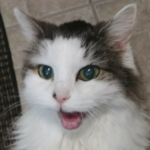 Changes in your cat’s vocalizations can indicate discomfort. A normally quiet cat who begins meowing excessively, particularly in a lower or higher pitch than usual, might be trying to communicate pain or distress. Our experience has been that senior cats become more vocal with age and in turn some cats become more vocal when in pain, while others become unusually quiet. You have to know your own cat and where the difference between elder vocals and sickness.
Changes in your cat’s vocalizations can indicate discomfort. A normally quiet cat who begins meowing excessively, particularly in a lower or higher pitch than usual, might be trying to communicate pain or distress. Our experience has been that senior cats become more vocal with age and in turn some cats become more vocal when in pain, while others become unusually quiet. You have to know your own cat and where the difference between elder vocals and sickness.
Changes in Eating and Drinking Habits
Appetite Fluctuations
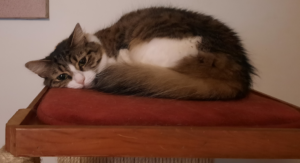 Even a healthy senior cat typically maintains consistent eating patterns. While some cats naturally eat more enthusiastically than others, any significant change from your cat’s normal appetite warrants attention. Both increased and decreased appetite can signal health problems.
Even a healthy senior cat typically maintains consistent eating patterns. While some cats naturally eat more enthusiastically than others, any significant change from your cat’s normal appetite warrants attention. Both increased and decreased appetite can signal health problems.
- Complete refusal of food for more than 24 hours
- Sudden excessive hunger
- Difficulty chewing or dropping food from the mouth
- Interest in food but reluctance to eat
- Dramatic weight loss or gain
Water Consumption
Changes in drinking behavior can indicate various health issues. A senior cat drinking significantly more water than usual might be showing early signs of kidney disease, diabetes, or hyperthyroidism. Conversely, a senior cat drinking less than normal might be experiencing nausea or dental pain.
Activity Level and Physical Appearance
Energy and Mobility Changes
A noticeable decrease in your cat’s activity level or willingness to play often signals that something is amiss. While they rest more as they get older, senior cats typically maintain consistent activity patterns throughout adulthood, with natural slowing as they enter senior years. Sudden changes in mobility or energy warrant investigation.
Look for:
- Reluctance to jump or climb
- Limping or favoring a limb
- Difficulty rising from rest
- Decreased interest in play
- Lethargy or excessive sleeping
Grooming Habits
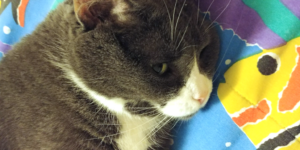 Cats are meticulous groomers, typically spending several hours each day maintaining their coat. Changes in grooming behavior often correlate with health status. A cat who stops grooming may be experiencing pain, obesity-related mobility issues, or dental problems that make grooming uncomfortable.
Cats are meticulous groomers, typically spending several hours each day maintaining their coat. Changes in grooming behavior often correlate with health status. A cat who stops grooming may be experiencing pain, obesity-related mobility issues, or dental problems that make grooming uncomfortable.
Concerning signs include:
- Unkempt or greasy-looking coat
- Excessive grooming of one area (may indicate pain)
- Dandruff or flaky skin
- Bald patches or broken hairs
- Matted fur, especially in long-haired breeds
When to Monitor at Home vs. When to See the Vet
Minor Issues That May Resolve With Monitoring
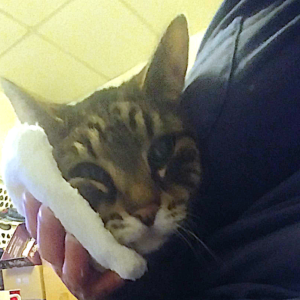 Some mild symptoms may resolve without veterinary intervention and can be monitored at home for 24-48 hours:
Some mild symptoms may resolve without veterinary intervention and can be monitored at home for 24-48 hours:
- A single episode of vomiting or diarrhea with normal behavior otherwise
- Slightly decreased appetite for one meal, followed by normal eating
- Brief episodes of sneezing without other respiratory signs
- Minor changes in energy that resolve quickly
- Occasional hairballs in long-haired cats
During home monitoring, ensure your cat has access to fresh water and a quiet, comfortable space. Track symptoms, including frequency and any changes in severity, to report to your veterinarian if needed.
Red Flags Requiring Immediate Veterinary Care
Certain symptoms should never be ignored and require immediate veterinary attention:
- Difficulty breathing, open-mouth breathing, or rapid breathing
- Inability to urinate (especially in male cats—this is a life-threatening emergency)
- Collapse or inability to stand
- Prolonged vomiting (more than twice in 24 hours)
- Seizures or loss of consciousness
- Trauma or suspected poisoning
- Bleeding from any orifice
- Dragging rear legs or sudden paralysis
- High fever (above 103°F/39.4°C) or hypothermia
- Pain when touched or handled
The Gray Area: When to Call Your Vet for Advice
Some symptoms fall into a middle ground where professional advice can help determine next steps:
- Mild lethargy lasting more than 48 hours
- Decreased appetite for more than 24 hours
- Intermittent vomiting over several days
- Changes in water consumption
- Coughing or sneezing that persists more than two days
- Minor limping without obvious injury
In these cases, a phone consultation with your veterinarian can help determine whether an examination is necessary or if continued monitoring is appropriate.
Conclusion
Learning to recognize the subtle signs of illness in your senior cat requires attention to their normal patterns and a willingness to investigate changes. Remember that most cats instinctively hide pain and discomfort, meaning that by the time symptoms become obvious, the condition may be quite advanced. When in doubt, consulting with your veterinarian is always the safest approach. Establishing a relationship with a veterinarian before emergencies arise will ensure your senior cat receives the best possible care when health concerns develop.
Regular preventive care, including annual wellness examinations, can help detect health issues before they become serious problems. These routine visits also provide opportunities to discuss any subtle changes you’ve noticed in your cat’s behavior, potentially catching health issues in their earliest stages. Your attentiveness and willingness to seek professional guidance when needed are your cat’s best defenses against illness and disease.


